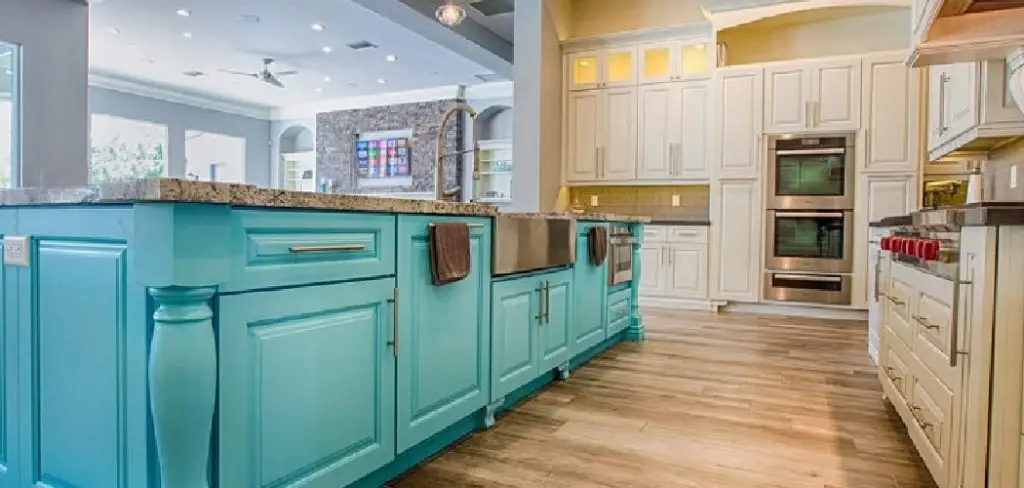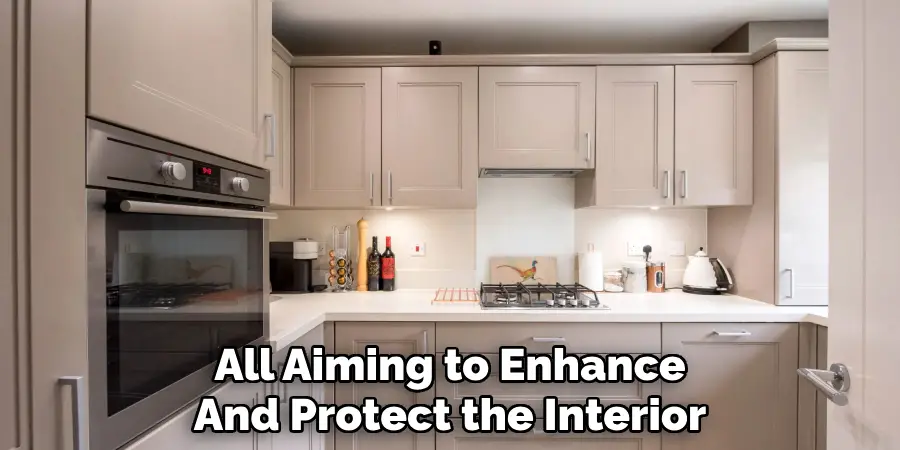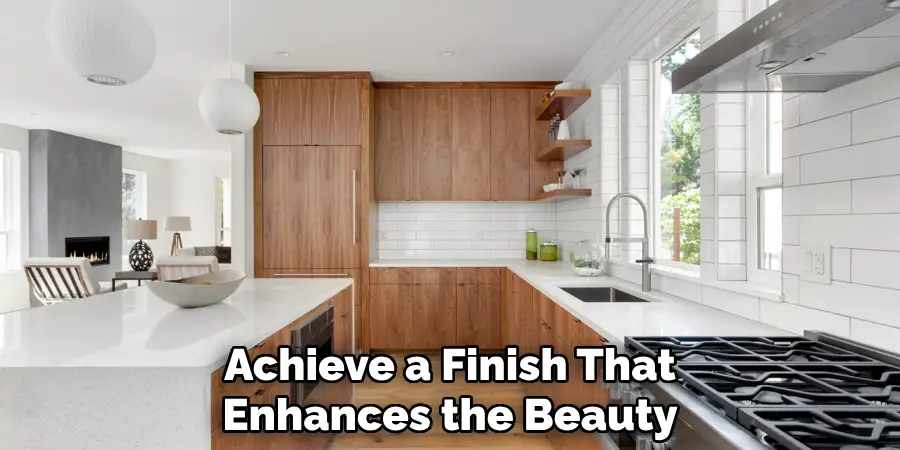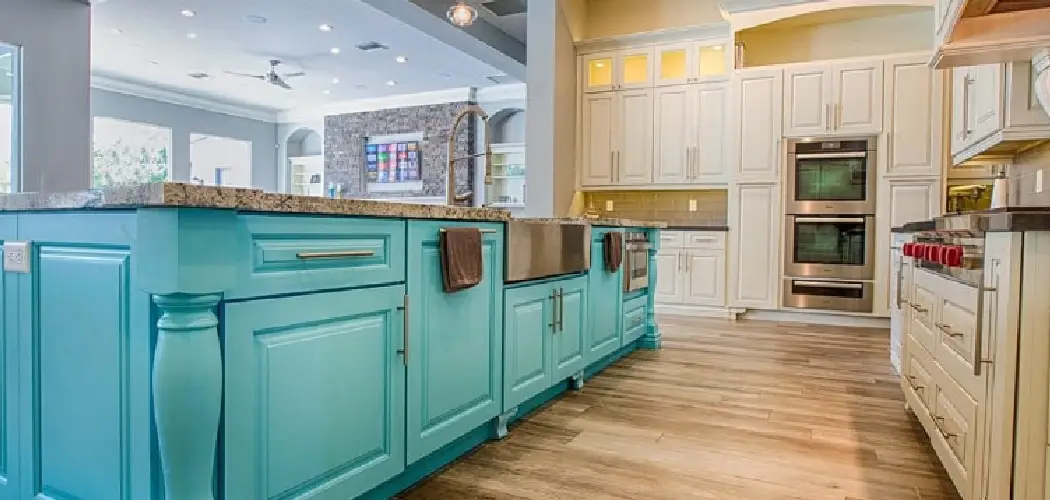Finishing the inside of cabinets is an essential step in both new cabinetry projects and refurbishing existing setups. A well-finished interior not only enhances the aesthetic appeal but also extends the life of the cabinetry by providing a protective layer against moisture, stains, and wear.

The process involves selecting appropriate materials and techniques to ensure that the finish is durable and matches the cabinet’s external appearance. This guide explores the key aspects of how to finish inside of cabinets.
Whether you’re tackling this as a DIY project or overseeing a professional installation, understanding the basics of cabinet finishing can significantly improve the functionality and longevity of your storage spaces.
Importance of Finishing the Inside of Cabinets
Finishing the inside of cabinets is crucial for several reasons. Primarily, it acts as a protective barrier, shielding the wood from potential damage caused by moisture, spills, and general wear and tear. A well-sealed interior can prevent warping, cracking, and other forms of deterioration that could compromise the structural integrity of the cabinets.
Additionally, a finished surface is much easier to clean and maintain, reducing the likelihood of mold and bacteria growth that can occur in unfinished wood. Beyond the practical benefits, a uniformly finished cabinet interior also provides a polished and cohesive look, enhancing the overall aesthetics of the space and reflecting a higher level of craftsmanship and attention to detail.
Types of Cabinet Finishes
When it comes to finishing the inside of cabinets, several types of finishes can be employed, each offering distinct advantages. The choice of finish often depends on the desired aesthetics, the cabinetry material, and the specific use-case requirements. Here are some popular types of cabinet finishes:
- Varnish: Varnish is a popular choice for its durability and water-resistant properties. It provides a clear finish that allows the natural beauty of the wood grain to shine through. Varnishes are available in several sheens, from matte to glossy, giving you flexibility in achieving the desired look.
- Lacquer: Known for its quick-drying nature and smooth finish, lacquer is ideal for those seeking a more polished appearance. It offers excellent protection against moisture and scratches, making it suitable for high-use cabinets.
- Paint: For a custom or colored finish, paint offers endless possibilities. A coat of high-quality paint not only protects the wood but also adds a personalized touch to your cabinetry. Paints with a satin or semi-gloss sheen are often preferred for ease of cleaning.
- Oil Finishes: Oil finishes penetrate the wood, highlighting its natural character and providing a warm, mature appearance. While they may require more frequent reapplication compared to other finishes, oils are valued for their environmentally friendly properties.
- Polyurethane: As a synthetic finish, polyurethane is appreciated for its water-resistant and highly durable qualities. It provides a hard, protective layer over the wood, making it ideal for kitchens where moisture and stains are prevalent.
Selecting the right type of finish for your cabinets ultimately depends on the balance you wish to achieve between aesthetics and durability. Each finish comes with its unique set of attributes, all aiming to enhance and protect the interior of your cabinetry.

Preparation Before Finishing
Proper preparation is critical before applying any finish to the inside of cabinets. To ensure the best results, it’s important to start by thoroughly cleaning the surfaces. Use a mild detergent and warm water to remove dirt, grease, or residue, and allow the wood to dry completely.
Next, inspect the interior for any imperfections or damage, such as dents or scratches, and fill them with a suitable wood filler. Sand the surface to create a smooth base, using medium to fine-grit sandpaper, while ensuring to sand along the grain to prevent scratches.
After sanding, carefully vacuum or wipe down the interior to eliminate any dust particles that could affect the finish. Finally, apply a wood conditioner or sealer, if recommended for the specific type of wood, to ensure even stain absorption and improve the finish’s durability.
Taking these preparatory steps ensures that the finish will adhere effectively and result in a professional-quality appearance.
10 Methods to Perfectly Finish the Inside of Cabinets
1. Paint for a Vibrant, Smooth Look
Painting is one of the simplest and most affordable ways to finish the inside of your cabinets. Choose a high-quality acrylic or latex paint that’s durable and safe for interiors. Light colors can brighten the space and make it easier to spot items, while darker tones lend cohesion in minimalist or industrial designs.
Pro Tip: Use a foam roller for a smooth, brush-stroke-free finish and seal the paint with a polyurethane topcoat for extra durability.

2. Staining for a Classic Wooden Finish
Stain works beautifully if you want to enhance the natural beauty of woodgrain cabinets. It penetrates deeply into the wood, adding warmth and depth while preserving its character.
Pro Tip: Apply pre-stain wood conditioner to prevent blotchiness, especially for softwoods like pine. Finish with a clear polycrylic coating to protect against scratches.
3. Wallpaper for a Decorative Touch
Wallpaper isn’t just for walls—it’s perfect for sprucing up cabinet interiors. Opt for peel-and-stick wallpaper for an easy application and be adventurous with patterns and colors.
Pro Tip: Look for moisture-resistant wallpaper to ensure long-lasting results, especially in humid areas like kitchens.
4. Vinyl Shelf Liners for Quick Protection
Vinyl liners are an incredibly user-friendly solution to finish cabinet shelves. They’re available in a variety of patterns and offer added protection against spills and stains.
Pro Tip: Use a cutting mat and utility knife for precise trimming, and ensure the surface is clean and dry before application.
5. Wood Veneer for an Elegant Upgrade
If you’re after a high-end look, wood veneer is an excellent choice. Made from thin slices of real wood, it can add a luxurious touch without breaking the bank.
Pro Tip: Use contact adhesive to affix the veneer securely, and sand the edges for a seamless finish.
6. Melamine Coating for Durability
Melamine is a popular option for cabinetry interiors due to its durability and easy-to-clean surface. Pre-laminated melamine boards or self-adhesive melamine film can be used for a professional look.
Pro Tip: Always pre-drill holes when attaching melamine panels to prevent chipping or cracking.

7. Fabric Liners for Soft Elegance
Adding fabric liners to cabinet interiors creates a cozy and stylish finish. Look for durable, washable fabrics like canvas or cotton for practical use.
Pro Tip: Attach the fabric securely with fabric adhesives or Velcro strips. This not only makes it removable for washing but also protects the material from dust and wear.
8. Epoxy Coatings for Industrial Strength
For a sleek and high-performance finish, consider using epoxy coatings, especially in cabinets frequently exposed to heavy use or moisture. Epoxy provides a glossy, waterproof seal that is both durable and visually appealing.
Pro Tip: Apply epoxy in a well-ventilated area and allow ample curing time to ensure a flawless, long-lasting finish.
9. Cork Lining for an Eco-Friendly Option
Cork liners are an innovative and sustainable way to finish cabinet interiors. They offer a warm, natural look while protecting your cabinets from scratches and dents.
Pro Tip: Cork self-healing properties make it ideal for heavy-use cabinets. You can glue it down or purchase adhesive-backed cork tiles for easy installation.
10. Acrylic Panels for a Modern Look
Clear or frosted acrylic panels can give your cabinets a sleek, modern touch. They’re especially popular for display cabinets with see-through doors, offering a clean and minimalist aesthetic.
Pro Tip: Cut panels to fit precisely, and use double-sided adhesive pads to fix them to the interior. Clean them regularly with non-abrasive cleaners to maintain clarity.
Things to Consider When Choosing a Cabinet Finish
Selecting the right finish for your cabinet interiors involves various considerations to ensure both functionality and aesthetics. First, assess the cabinet’s environment—kitchens and bathrooms may require finishes that withstand moisture and heat.
Durability is another key factor, particularly if the cabinets are subject to heavy use or frequent cleaning. Additionally, think about the current style of your home and how the finish will complement or contrast with the existing decor.
Consider your budget as well, as some finishes, like acrylic or high-end veneers, can be more expensive than others such as paint or shelf liners. Finally, evaluate your level of expertise in applying the finish; certain techniques might require professional help to achieve optimal results.
Balancing these aspects will help you achieve a finish that enhances the beauty and longevity of your cabinetry.

Conclusion
Choosing the right finish for the inside of your cabinets can transform both the appearance and functionality of your storage spaces. Whether you opt for the vibrant color of paint, the classic warmth of stain, or the modern elegance of acrylic panels, each method detailed above offers unique benefits suitable for different styles and needs.
When selecting a finish, consider factors such as durability, ease of application, and how it fits into the overall design of your home. Thanks for reading, and we hope this has given you some inspiration on how to finish inside of cabinets!

